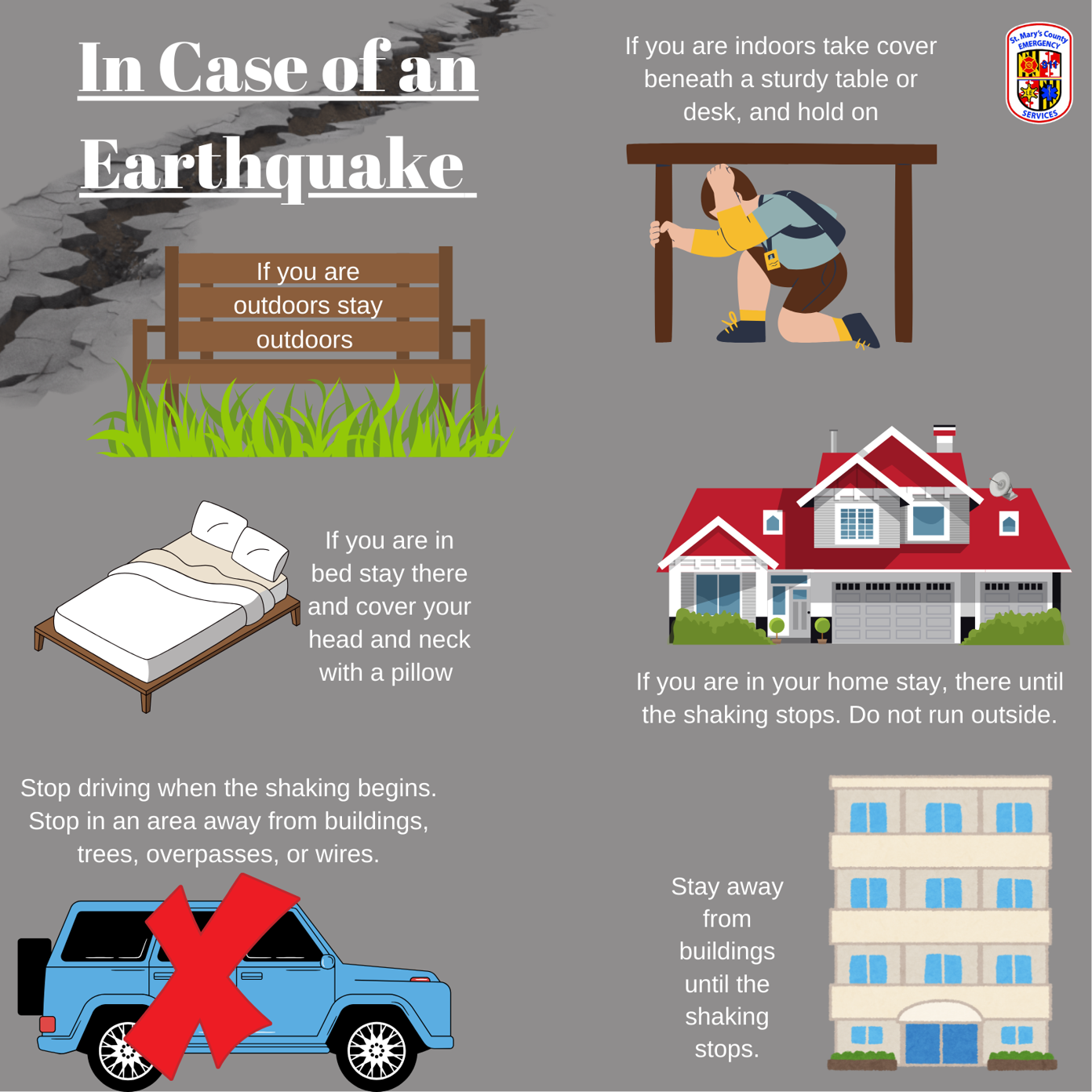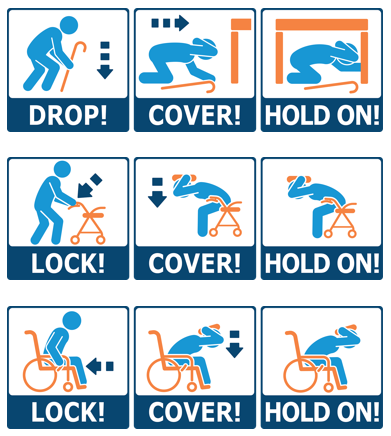Earthquakes
An earthquake is caused by a sudden slip on a fault within the Earth. The tectonic plates are constantly moving, but they can get stuck at their edges due to friction. When the stress on the edge overcomes the friction, there is an earthquake that releases energy in waves that travel through the Earth’s crust and cause the shaking that we feel.
While strong earthquakes are unusual in Maryland, the state occasionally experiences perceptible earthquakes.
It can be hard to prepare for an earthquake because they come so suddenly. The best way to be prepared is to create an emergency plan. Visit https://www.stmaryscountymd.gov/ES/BePrepared/ for more information!

Getting to cover
- Drop down onto your hands and knees immediately. This position can protect you from anything that can fall on you.
- Cover your head and neck underneath a sturdy table or desk. If there is no shelter nearby, get down near anything that is sturdy and can cover you. Try to stay away from windows or glass that could shatter.
- Hold on to your shelter until the shaking stops. Be prepared to move with your shelter if the shaking shifts you or your shelter.

If you use a cane: DROP, COVER, and HOLD ON or sit on a chair, bed, etc. and cover your head and neck with both hands. Keep your cane near you.
If you use a walker or wheelchair: LOCK the wheels (if applicable). If using a walker carefully get as low as possible. Bend over and COVER your head/neck with your arms, a book, or a pillow. Then HOLD ON until the shaking stops.
When the Earth shakes
Recognizing the signs of an earthquake can help you take protective measures promptly. During an earthquake, you may experience:
- A rumbling sound that progressively intensifies.
- A rolling sensation that begins subtly and quickly escalates in strength.
- A sudden, violent jolt followed by intense shaking, which may make it difficult to maintain your balance or move between rooms.
- Understanding these indicators can enable you to assume a safe position and reduce your risk of injury.
After an Earthquake
Follow these key suggestions after an earthquake occurs in your area.
- When the shaking stops, look around to make sure it is safe to move. Then exit the building.
- Expect aftershocks. These secondary shockwaves are usually less violent than the main quake but can be strong enough to do additional damage to weakened structures and can occur in the first hours, days, weeks, or even months after the quake.
- Remember to help your neighbors who may require special assistance such as infants, the elderly and people with access and functional needs. Do not move seriously injured persons unless they are in immediate danger of further injury. Call for help.
- Look for and extinguish small fires. Fire is the most common hazard after an earthquake.
- Listen to a battery-operated radio or television for the latest emergency information.
- Use the phone only for emergency calls.
